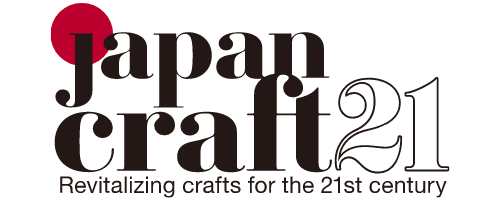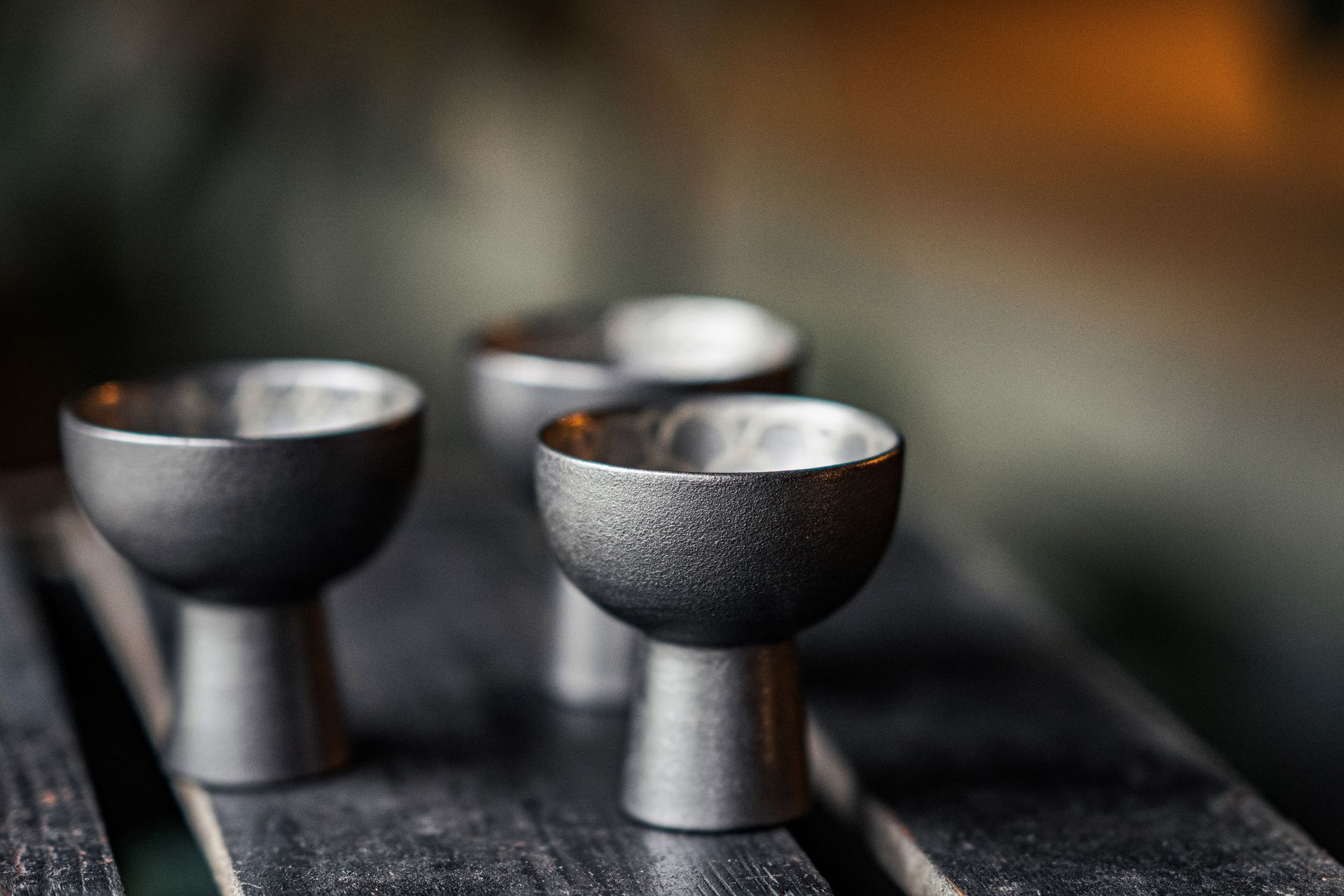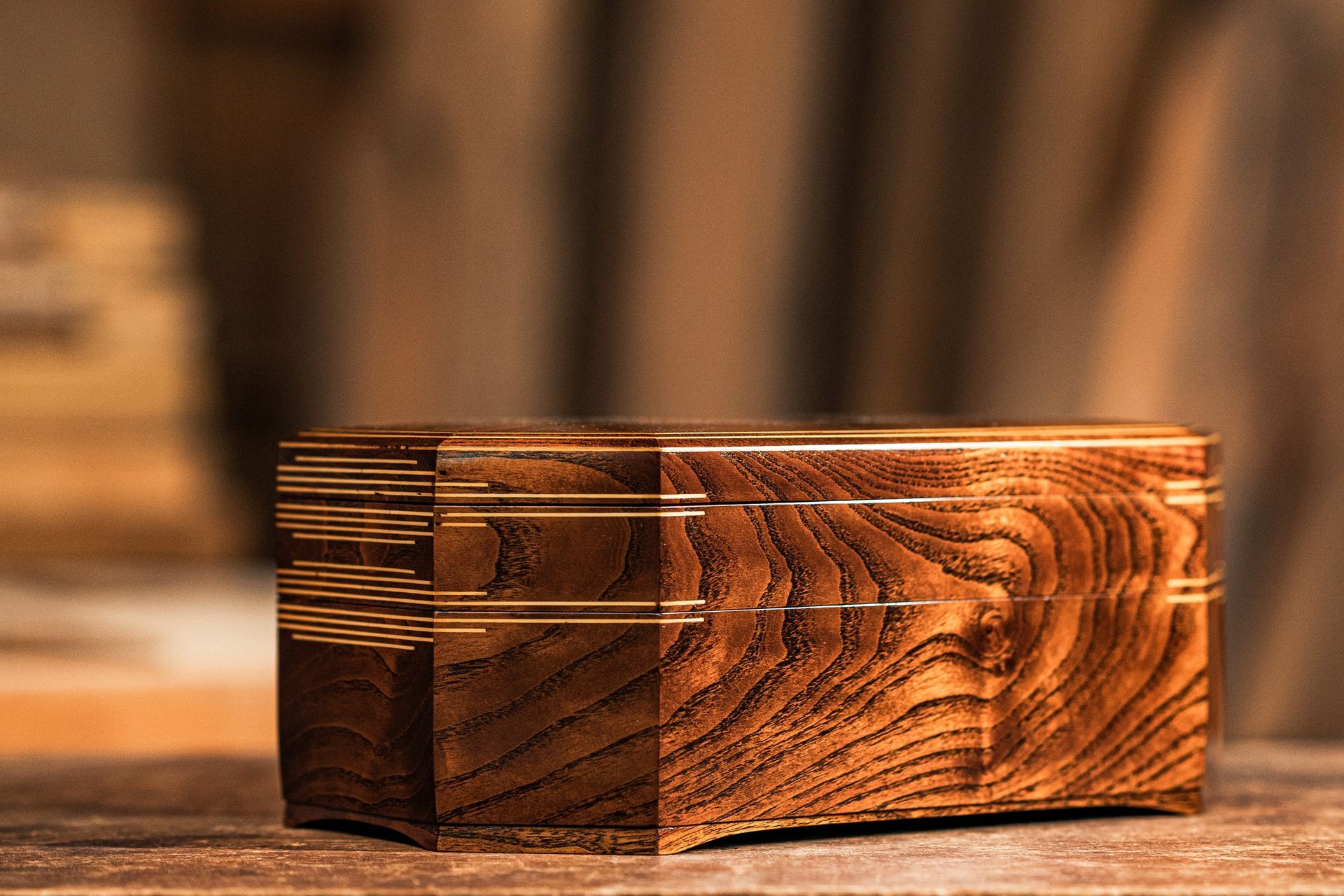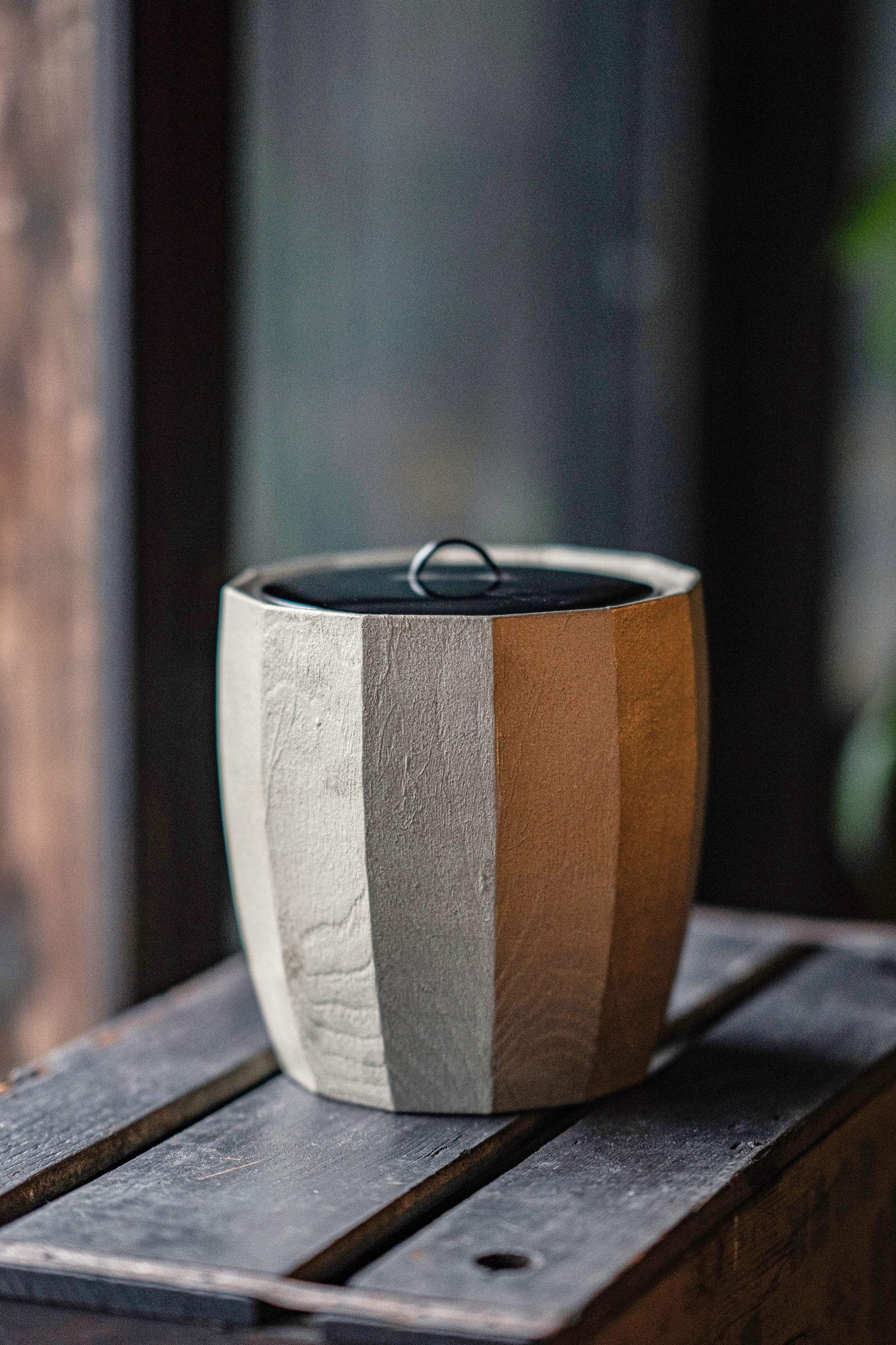Click Image to Enlarge
Write whatever you want about this artwork.
The design and the materials for this traditional Japanese letter box are completely original. The carved-in-relief pattern comes from the culture of the Ainu people, indigenous to Japan. Both the construction and carving of the box as well as the complex multi-layered urushi lacquer application were done by one person, Tohru Tsuji, who originated the silver-like tin and urushi finish.
Click Image to Enlarge
Tohru TSUJI raises lacquer trees, harvests and refines the sap, and applies his original urushi combinations to wood vessels that he creates by lathe or by hand carving, hand finishing or hollowing out by scooping.
Tohru TSUJI
Lacquer ・ Ibaraki
-
Artist's Story
Tohru TSUJI is master of urushi (lacquer). He raises his own lacquer trees, harvests and refines the sap, and applies it to wood vessels that he creates. Typically, these five distinct jobs are done by five different people.
His woodworking skills include lathe wood turning, carving in relief, kurinuki scooping or hollowing out blocks of wood, joining pieces of wood barrel-style, and wood inlay. He believes in “healthy production,” and is committed to consistency from the beginning to the end of his work, using only high-quality wood and continuously producing lacquer from seedling to refined urushi. Carefully and methodically producing works that he, himself, wants to use and enjoy is an important and essential part of his “healthy production” credo.
Tsuji’s work clearly demonstrates his strong university-inspired design background. An innovator, he developed a process that combines tin powder with Japanese lacquer, resulting in a durable silver finish.
-
About the Craft
Urushi 漆, a completely natural lacquer coating, has been in use in Japan for 9,000 years. It is the world’s hardest and most durable coating, and can be applied to wood, metal, bamboo, glass, even over hemp cloth (known as “dry lacquer”). Not only it is a protective coating but it has anti-bacterial properties, is easy to clean, and increases the longevity of whatever it is applied to. Clear urushi coating on wood appears more lustrous and beautiful over time, and the wood grain becomes more prominent.
The clear, honey-colored sap from the lacquer tree (Rhus vernacifera) is collected by hand from incisions on the tree trunk; total output of the precious substance which can ever be extracted from one tree is only six ounces (177 cc). Mineral pigments can be added to create any color, such as iron oxide for black urushi or red iron oxide for red urushi.
During the Heian period (792 - 1185), lacquer-coated wooden functional ware was very popular and Japan became Asia’s undisputed lacquer master during the Golden Age of lacquerware which followed. The Portuguese introduced it to the west in the 16th century and it was widely spread in the 17th century by the Dutch East India Company, enthralling royalty and nobility alike. Marie Antoinette amassed a famous collection of lacquerware items. Japanese urushi ware dazzled the west as Japanism spread during the Belle Époque.
Mother-of-pearl inlay is a process of embedding pieces taken from the iridescent inner layer of mollusk shells (abalone or oyster shell, etc.) into urushi. The pieces of shell are arranged in decorative motifs and most often cover a wooden base. The Japanese adopted this methodology from the Chinese in about the 7th century CE.
Maki-e, the most famous urushi decorative technique, is a 1200-year old, native Japanese process involving the sprinkling of gold or silver power on a decorative design of still wet urushi. Makie motifs can either be in burnished, flat or 3-dimentional raised form.
Hyomon is the embedding of metal sheet as an inlay on an urushi surface
Chinkin is the application of gold into decorative patterns which are incised into the surfaces of urushi vessels.
Kinma involves incising decorative motifs in an urushi surface and filling it with colored urushi. It is believed to have originated in Southeast Asia.
Choshitsu is carved lacquer achieved by applying many layers of colored lacquer, usually to a wooden surfaces, then using a metal carving knife to engrave 3-dimensional designs. It takes at least 100 layers of urushi to achieve 3mm for carving. The technique most probably came from China about 800 years or more ago.
-
Click Image to Enlarge
ButtonLathe-formed wooden functional ware; complex multi-layered urushi lacquer coating - an original silver-like finish achieved by combining tin powder with urushi lacquer.
-
Click Image to Enlarge
ButtonA Japanese urushi lacquer tree (Rhus vernicifera). The precise horizontal gashes are cut into the urushi sap layer just below the bark for sap harvesting.
-
Click Image to Enlarge
ButtonA wood-based pouring bowl with spout, shaped by hollowing out, scooping; freehand vertical striations on the exterior. Multilayers of urushi, culminating with black, over which red is randomly applied.
-
Click Image to Enlarge
ButtonA wood-based vase with freehand vertical striations over partially visible wood grain; complex multi-layered urushi lacquer finish - the original silver-like finish achieved by combining tin powder with urushi lacquer.
-
Click Image to Enlarge
ButtonMulti-layer wooden box with horizontal inlay and multiple coats of translucent urushi lacquer.
-
Click Image to Enlarge
ButtonCarving tool
-
Click Image to Enlarge
ButtonA wooden cold water mizusashi jar for the Way of Tea; 12 vertical wood pieces are fused and coated with multi-layered urushi lacquer; partially visible wood grain; original silver-like finish of tin powder and urushi.
-
Click Image to Enlarge
ButtonA wooden vase formed by fusing 12 vertical pieces and coating with multi-layered, translucent urushi lacquer.
CONTACT ・ Tohru TSUJI
Website (English): Ware Wood Works Co.
Instagram: @Tsuji.tohru
Japancraft21: Email Us










